Running CLion for the First Time
Running CLion for the first time assumes performing the following tasks:
- Importing CLion settings from a previous version
- Selecting to start CLion evaluation or activating a license
- Selecting the user interface theme
- Configuring Toolchains
- Disabling unnecessary plugins
- Downloading and installing additional plugins
Importing CLion settings from a previous version
When you start CLion for the first time, the Complete Installation dialog opens, and you have an option of importing CLion usage preferences and license information from a previous version.
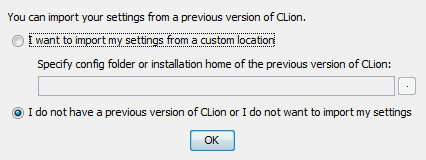
Select one of the following options and click OK.
- I want to import my settings from a previous version (<path>). If this option is present in the dialog, the directory that contains the CLion settings and license information is found at its default location. (The corresponding path is shown within the option name in parentheses.) Most likely, this is the option that you want.
- I want to import my settings from a custom location. You may have the directory with the settings and license information available but not at its default location. If the option discussed above is missing, CLion doesn't know where this directory is; the path initially shown in the field is just a guess, and there's no guarantee that the necessary folder is really there. To import the settings in this case, you can specify the folder with the settings (if you know where it is) , or an installation folder of the previous CLion version. To do that, click
 and select the folder in the dialog that opens .
and select the folder in the dialog that opens . - I do not have a previous version of CLion or I do not want to import my settings. If this is your case, select this option.
Selecting to start CLion evaluation or activating a license
Do one of the following:
- Evaluate for free for 30 days . Click this button to start evaluating CLion.
- Buy CLion . Click this button to go to the JetBrains Web site to study the CLion purchasing options and to buy a license.
- If you are ready to activate your license, do so.
The CLion License Agreement is shown at the company's site.
Selecting the user interface theme
Select the user interface theme to be used and click Next.
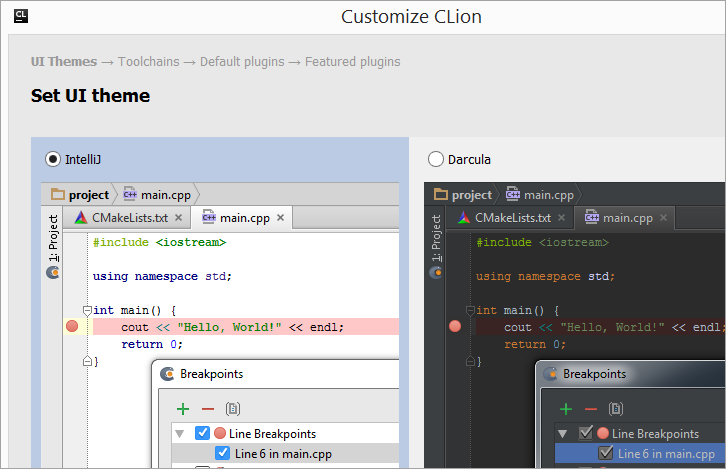
Configuring Toolchains
On this page of the wizard, specify your preferred environment (fow Windows and Linux), CMake and GDB executables.
Note that if a certain compiler or variable is missing, CLion shows the image:
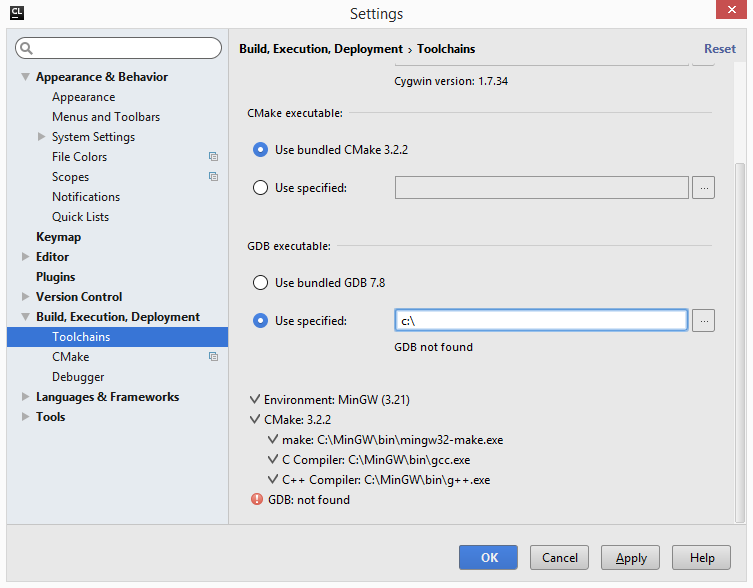
Note that Next button is still available; however, if you create or open a project without properly configured Toolchains, you'll get error messages.
Select the proper installation and make sure there are no red exclamation marks:

Disabling unnecessary plugins
On the Default plugins page, you can disable the plugins that you are not going to use. (The more plugins are enabled, the more features you have available. On the other hand, disabling unnecessary plugins may increase the IDE performance, especially on "less powerful" computers.)
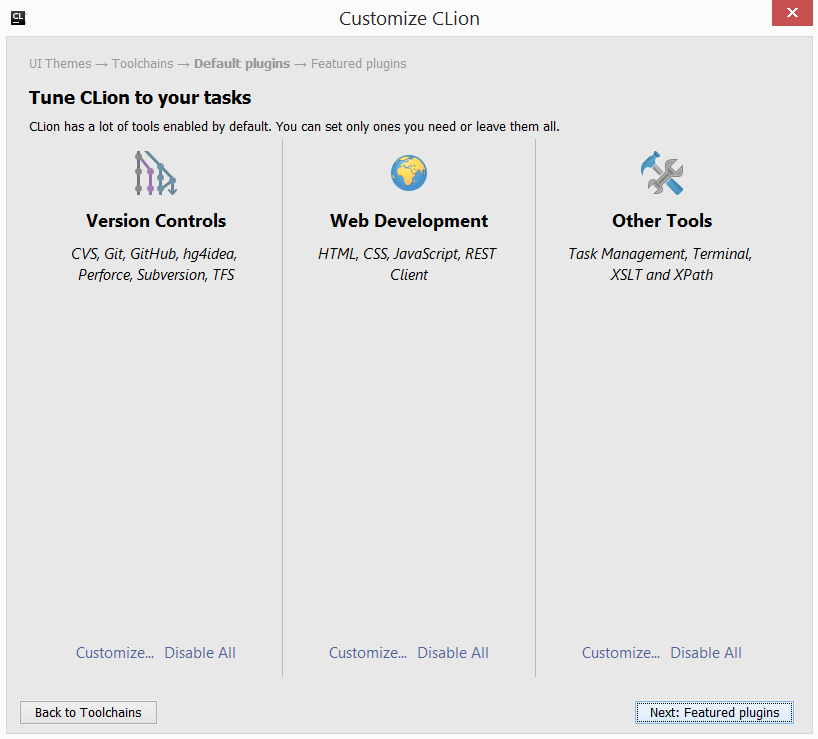
The squares on the page correspond to groups of plugins and individual plugins. All these plugins are bundled with the IDE and enabled by default.
Use:
- Customize to disable one or more plugins in a group. (Use the check boxes on the page that opens.)
- Disable All or Disable to disable all plugins in a group or an individual plugin.
Note that you can come back to disabling and enabling the plugins at a later time.
Downloading and installing additional plugins
The Featured plugins page shows the plugins that you might want to download and install. (All these plugins are not included in the CLion distribution.)
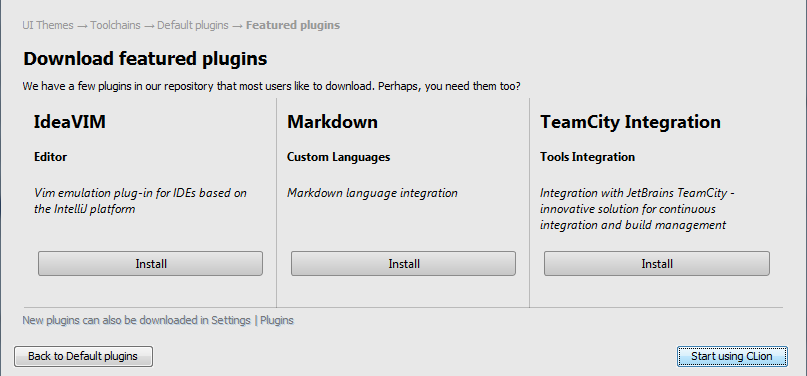
Click Install to download and install anyone of the plugins.
Click Start using CLion to complete the wizard. As a result, the Welcome screen opens.